Menus
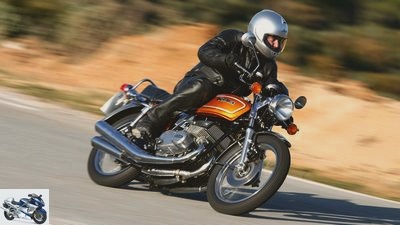
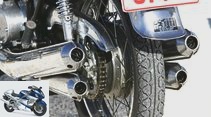
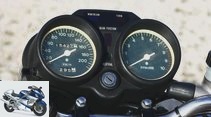
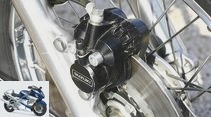
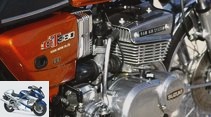
20th photos
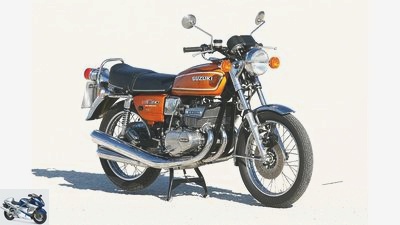
1/20
The Suzuki GT 380 was in Germany from the end of 1972 to 1980, …
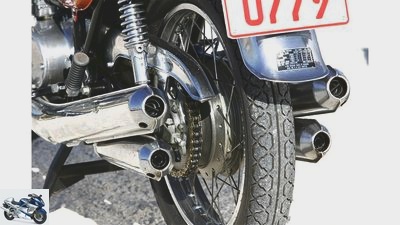
2/20
Thus, the chrome-clad GT 380 fires from four tubes and maintains the symmetry.
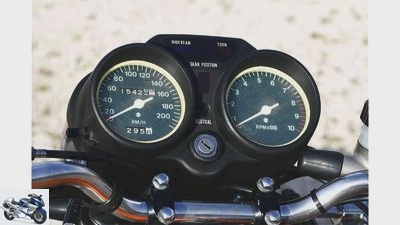
3/20
The GT is good as a wonderful-sounding luxury item that starts off easily from 4000 rpm and then develops a brave temperament up to the nominal speed.

4/20
Temperament, because it is not wobbly, but still easy to pull through the curves and – if the series suspension struts have been replaced – swings casually over country roads.
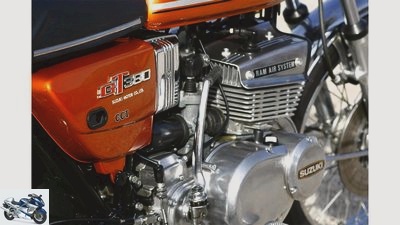
5/20
In contrast to the 550 with an electric starter, the 380 can be kicked.
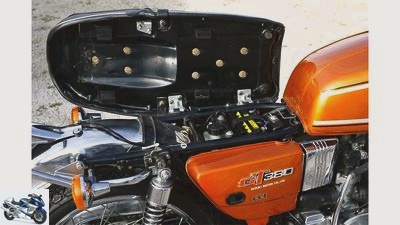
6/20
When buying a used vehicle, make sure that the exhausts and all paintwork and housing parts are in usable condition.
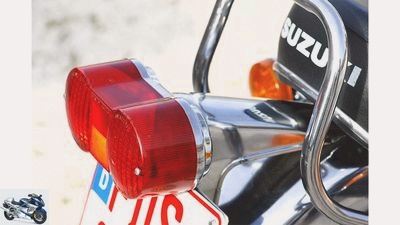
7/20
Chrome and beautiful lines are what give the bike its 70s charm.
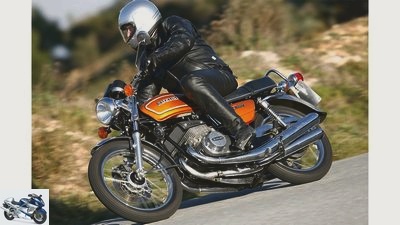
8/20
At 130 on the track, around eight liters run through the 24-inch Mikunis, plus that …
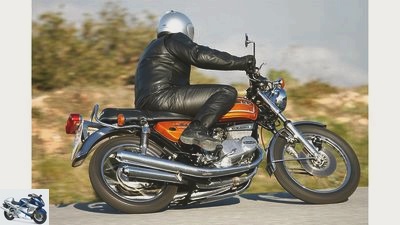
9/20
… two tenths of an oil left.
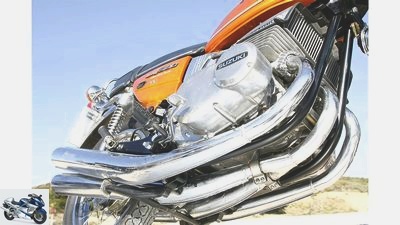
10/20
In order for this to work, the middle manifold divides and flows into two pots.
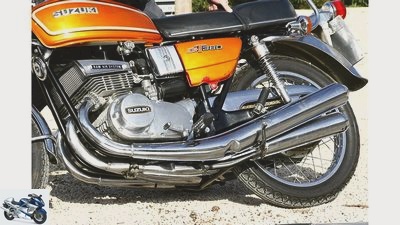
11/20
A lesson in symmetry:
Three cylinders, but two tubes on the left and two on the right …
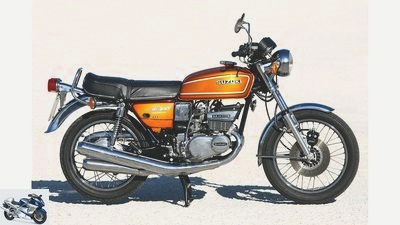
12/20
… whereby the last copies were sold in the box.
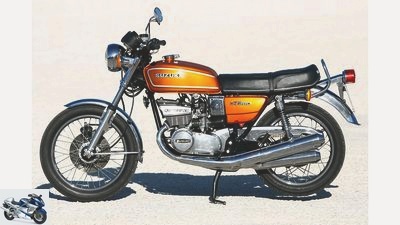
13/20
Suzi did not deserve that – especially her numerous fans.
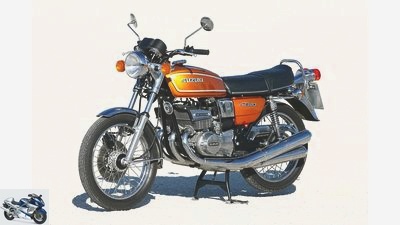
14/20
From 1977 she entered the 27 hp insurance class and bid there …

15/20
… a surprising amount of motorcycle for the money. And was …
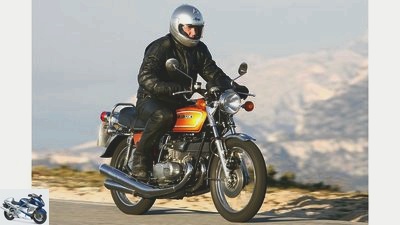
16/20
… easy to dethrottle.
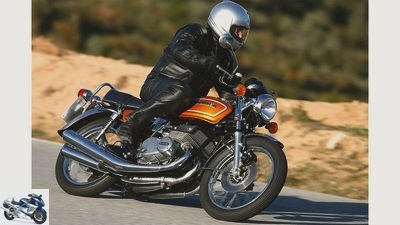
17/20
The GT 380 gained a large lead over the technically almost identical 550.
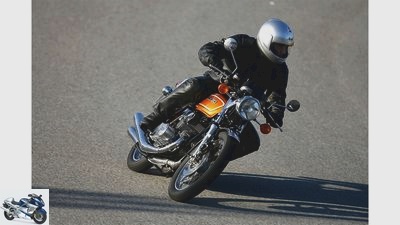
18/20
Good copies are still rare today, but complete ones are still available from 1500 euros.
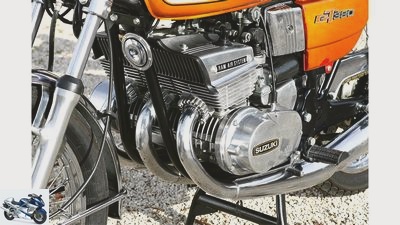
19/20
The three individual cylinders of the Suzi have a common head, over which the characteristic Ram Air hood towers.
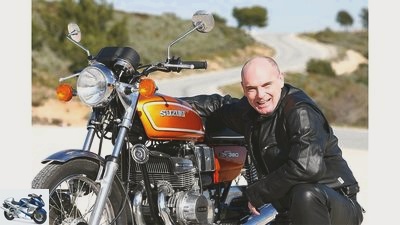
20/20
Who doesn’t like that
and hates cleaning
doesn’t have to drive a GT…
Cult bike Suzuki GT 380
Two-stroke three-cylinder
A two-stroke three-cylinder runs as smoothly and smoothly as a four-stroke six. Which is why it was simply called 3 = 6 in DKW cars. With this number trick, Suzuki’s middle class could also have gained in reputation.
I.Somehow, the engineers of the third largest Japanese manufacturer had not yet understood where the journey was going: Although they had long been successful in sport with heated two-stroke engines, they introduced the more moderate GT model family in the early 1970s. Only their two-cylinder 125 and 250 cc penetrated halfway in terms of performance in Yamaha regions. Above that, however, were mental machines that were out of the ordinary – and that is precisely why they are particularly interesting today. With their three cylinders, they had one more than many of their competitors. And one less than many Hondas.
Buy complete article
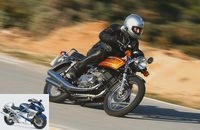
Cult bike Suzuki GT 380
Two-stroke three-cylinder
The three individual cylinders have a common head
Already in sport, Suzuki had crowned the cylinder heads of the 500 production racers – the young Barry Sheene drove something like that – with hood-like air deflectors in order to reduce the risk of piston jams and to cope with halfway normal candle heat values. In the GT series trim, these sheets were now called the Ram Air System. Wonderful and at least effective insofar as it can be said today that Kawasaki triplets actually produced a lot more Klemmer. The direct lubrication of five of the six crankshaft bearings by the load-dependent oil pump also increased the reliability, the sixth received its lubricant from the gearbox. The same had unnecessarily six gears on the 380 and five gears on the 550 and was considered an ornament to his guild. In the US version, the 380 produced a befitting 38 HP, due to tougher noise regulations, 32 of these remained according to DIN. But nobody would have complained about it had it not been for 1973 – the GT had just made itself really pretty with disc brakes instead of drum brakes – Yamaha’s RD 350 had appeared. That pressed a damn 39 HP, among other things because membranes in the intake tract increase the degree of filling.
The Suzuki GT 380, on the other hand, only uses the piston edges as control instruments according to old fathers’ tradition. That not only costs performance, but also fuel: At 130 on the track, around eight liters run through the 24-micronis operated via a clever distributor, plus two tenths of oil. Doesn’t matter today. Because the GT is good as a wonderful-sounding luxury item that starts off easily from 4000 rpm and then develops a brave temperament up to the rated speed. Because it is not wobbly, but still maneuverable through the curves and – if the standard struts have been replaced – swings casually over country roads. Because its lines look so beautiful after the 1970s and they are unabashedly hung with chrome. It even has four rear silencers, because for the sake of symmetry, the manifold of its middle cylinder splits and ends in two pots. Anyone who hates cleaning doesn’t have to drive a Suzuki GT 380.
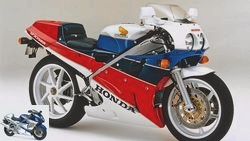
classic
We reveal our absolute classics
The dream classics from MOTORRAD Classic
read more
Information about the Suzuki GT 380
Data: Air-cooled three-cylinder two-stroke in-line engine, 371 cm³, 23.5 kW (32 PS) at 7500 / min, 29 Nm at 7000 / min, six-speed gearbox, double-loop frame made of tubular steel, weight 190 kg with a full tank, tires in front 3.00 x 19, rear 3.50 x 18, tank capacity 15 liters, top speed lying down 168 km / h, 0-100 km / h in 6.5 seconds.
Scene: The Suzuki GT 380 was available in Germany from the end of 1972 to 1980, the last copies were practically sold in the box. Suzi didn’t deserve that, especially her numerous fans. From 1977 it entered the 27 hp insurance class, where it offered a lot of motorcycles for the money – and was easy to dethrottle. In this way, it gained a huge lead over the technically almost identical 550 series (which has a brave 48 hp and an electric starter). Good copies are still rare, but complete ones are still available from 1500 euros. Caution: The exhausts as well as all paintwork and housing parts should be in usable condition. Future owners can purchase the repair instructions from Bucheli-Verlag (price: 39.90 euros).
Internet: The well-made website www.suzuki-classic.de takes care of all old Suzis and also includes a friendly forum. Those interested can find an extensive GT 380 model history on the English-language website www.suzukicycles.org. www.zweitakte.de only has one topic, and the Suzuki GT 380 also fits in there.
In issue 6/2014 our sister magazine MOTORRAD Classic published a large comparison of the Suzuki GT 550 and the four-stroke GS 550 E..
Related articles
-
www.bilski-fotografie.de Cult bike Yamaha XJ 900 From athlete to tourer How comfortable it can be between all chairs was demonstrated by Yamaha with the…
-
fact 20 pictures fact 1/20 The Yamaha XJ 650 found almost 14,000 buyers in Germany from 1980 to 1984, and there are still around 5000 copies in …
-
18th photos 1/18 1989: Drilled to 487 cm³, the GS 500 E starts with 46 HP. Its two-valve engine is also based on that of the GS…
-
Cult bike Suzuki VS 1400 Intruder
fact Cult bike Suzuki VS 1400 Intruder So clean, so strong, so persistent Usually the Japanese prefer consensus. The Suzuki VS 1400 Intruder, however,…
-
Rivas 6th photos Rivas 1/6 When the street single cylinder celebrated its rebirth in the 1980s, the most beautiful interpretation came from Italy. The…
-
archive Cult bike Benelli Tornado 650 Benelli Tornado 650 An Italian fad – showing prototypes that won’t go into production until years later – used to…
-
duke Cult bike Cagiva Elefant Desmodromic paired with studs Desmodromism and studs go together like a silk vest and rubber boots. Many think so. Others…
-
archive Single-cylinder cult bike: BMW R26 / R27 BMW R26 / R27 In the beginning they motorized the up-and-comers of the economic miracle, later…
-
mutschler.foto@t-online.de 8th photos mutschler.foto@t-online.de 1/8 Laverda 1000. mutschler.foto@t-online.de 2/8 Laverda 1000. fact 3/8 Not everyone…
-
archive 10 photos fact 1/10 Cult bike Honda XBR 500. Bilski 2/10 Cult bike Honda XBR 500. archive 3/10 Cult bike Honda XBR 500. Holzwarth 4/10 Cult bike…